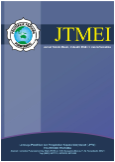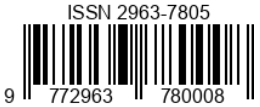Analisis Pemborosan Pada Proses Aliran Pergudangan PT. FLSmidth Indonesia dengan Metode Lean Warehousing
DOI:
https://doi.org/10.55606/jtmei.v2i4.2993Keywords:
Fishbone Diagram, Process Activity Mapping, Value Stream Mapping, Waste Assessment ModelAbstract
- FLSmidth Indonesia still has various wasteful activities in the spare-part warehousing flow process. This study was conducted with the aim of knowing the kinds of waste that occur and the proposed improvements that can be given. The analysis in this study uses the lean warehousing method which consists of Waste Assessment Model (WAM), Value Stream Mapping (VSM), Value Stream Analysis Tools (VALSAT), and Fishbone Diagram. This study provides the results of the total percentage of important non-value-added activities and non-value-added activities is 50% or equivalent to the percentage of value-added activities, as well as a total lead time of 7448 minutes. After analyzing improvements using Process Activity Mapping (PAM) and fishbone diagrams, it was found that the percentage of value-added activities increased to 56% and the total lead time changed to 7648 minutes.
Downloads
References
Azhra, F. H., Awandani, H., & Ibrahim, F. (2020). Penerapan Lean Thinking dengan Metode Value Stream Mapping dan Analisis VALSAT untuk Mengurangi Waste pada Komponen Closer Body Steel. PROSIDING INDUSTRIAL ENGINEERING CONFERENCE (IEC) 2020, 188–194. http://eprints.upnyk.ac.id/id/eprint/23995
Hines, P., & Taylor, D. (2000). Going Lean (Text Matters (ed.)). Lean Enterprise Research Centre Cardiff Business School.
Ibrahim, N. G., & Prasetyawan, Y. (2020). Evaluasi Pergudangan dengan Pendekatan Lean Warehousing dan Linear Programming. Jurnal Teknik ITS, 9(2), 278–283. http://ejurnal.its.ac.id/
Liker, J. K. (2004). The Toyota Way. McGraw-Hill. https://doi.org/10.1036/0071392319
Murnawan, H., & Mustofa. (2014). EVALUASI PRODUKTIVITAS DENGAN METODE FISHBONE DI PERUSAHAAN PERCETAKAN KEMASAN PT . X Latar belakang Masalah. Jurnal Teknik Industri HEURISTIC, 11(1), 27–46.
Naziihah, A., Arifin, J., & Nugraha, B. (2022). Identifikasi Waste Menggunakan Waste Assessment Model ( WAM ) di Warehouse Raw Material PT . XYZ Identification of Waste Using Waste Assessment Model ( WAM ) in the Warehouse Raw Material PT . XYZ. 6(1), 30–40. https://doi.org/10.35194/jmtsi.v6i1.1599
Pujani, N. P. V. (2019). Penerapan Lean Manufacturing untuk Mengurangi Waste pada Proses Produksi (Tiang Post) Produk Guardrail di PT. XXX. Jurnal Ilmu Manajemen Dan Akuntansi Terapan (JIMAT), 10(November), 81–99. http://eprints.upnyk.ac.id/id/eprint/23995
Purnomo, A. (2018). Analisis Penerapan Lean Warehouse untuk Minimasi Waste pada Warehouse Cakung PT Pos Logistik Indonesia. Jurnal Logistik Bisnis, 10(2), 4–16.
Rawabdeh, I. A. (2005). A model for the assessment of waste in job shop environments. International Journal of Operations & Production Management, 25(8), 800–822. https://doi.org/10.1108/01443570510608619
Suryatman, T. H., & Aprilia, E. C. (2022). Meminimasi Waste Pada Proses Fabrikasi Struktur Baja dengan Konsep Lean Manufacturing Menggunakan Metode Value Stream Mapping (Studi Kasus PT. CBD). Jurnal Teknik FT UMT, 11(02), 80–92.
Downloads
Published
How to Cite
Issue
Section
License
Copyright (c) 2023 Jurnal Teknik Mesin, Industri, Elektro dan Informatika

This work is licensed under a Creative Commons Attribution-NonCommercial-ShareAlike 4.0 International License.








